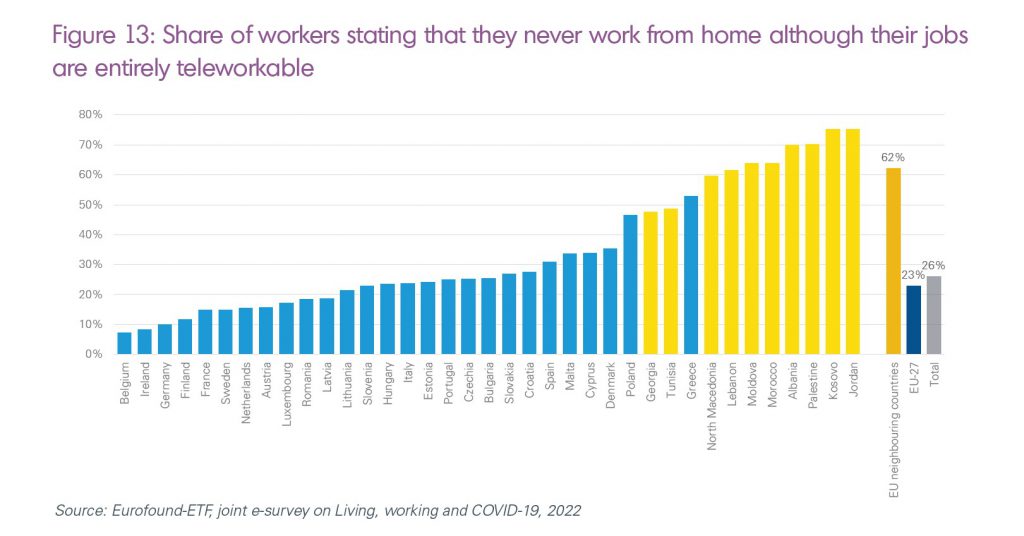Only one in three who can telework are being given this facility

A third of Maltese workers whose job can be performed entirely from home are nonetheless carrying out their duties from their workplace as they have not been given the opportunity to telework.
This figure emerges from a Eurofound report which analyses living and working conditions across Europe and neighbouring countries since the outbreak of Covid-19.
It transpires that 33% of Maltese workers have declared that they never work from home despite their jobs being entirely teleworkable. The rate which is well above the EU-27 average of 23%, is if the fifth-highest. Greece topped the list with more than half of the workforce complaining they were never given telework despite the nature of their job allowing such facility. On the other hand, the lowest respective rate was registered in Belgium with 8%.

While no reason is given for the slow take-up of telework in Malta, the trend is even more baffling given the daily ordeal experienced by thousands of employees to go to work due to traffic. A higher take up of telework would make significant improvement in our roads, as seen during the peak of the pandemic. Moreover, Malta has no infrastructural hurdles as the island’s digital connectivity is quite good.
In this research commuting time for work emerged as an issue with 24% of respondents across the EU citing this issue amid complaints this was eating up their free time. This concern was especially raised by respondents aged 30 to 44, with women pointing out difficulties with respect to childcare arrangements.
From a wider perspective almost one fifth of working EU-27 respondents have a hybrid arrangement (some days from work, some days from home). The combined or hybrid model is the second most common within the EU, with the most popular being carrying the duties from the workplace only.
In addition, the likelihood of working exclusively from home or in a hybrid modality increases with the level of education, with tertiary educated respondents are more likely to benefit from this type of work arrangement.
Women tend to work more from home (32% of surveyed women in the EU-27 vs 29% of men) and women also work more exclusively from home (14% of women vs 10% of men). Furthermore, when women telework, the proportion of teleworking out of their total working time is on average 25% versus 20% for men.
Among respondents whose job is fully teleworkable, 41% of surveyed workers worked from home, 33% in a hybrid mode (both from home and the workplace) and about one quarter (26%) exclusively from the workplace.
